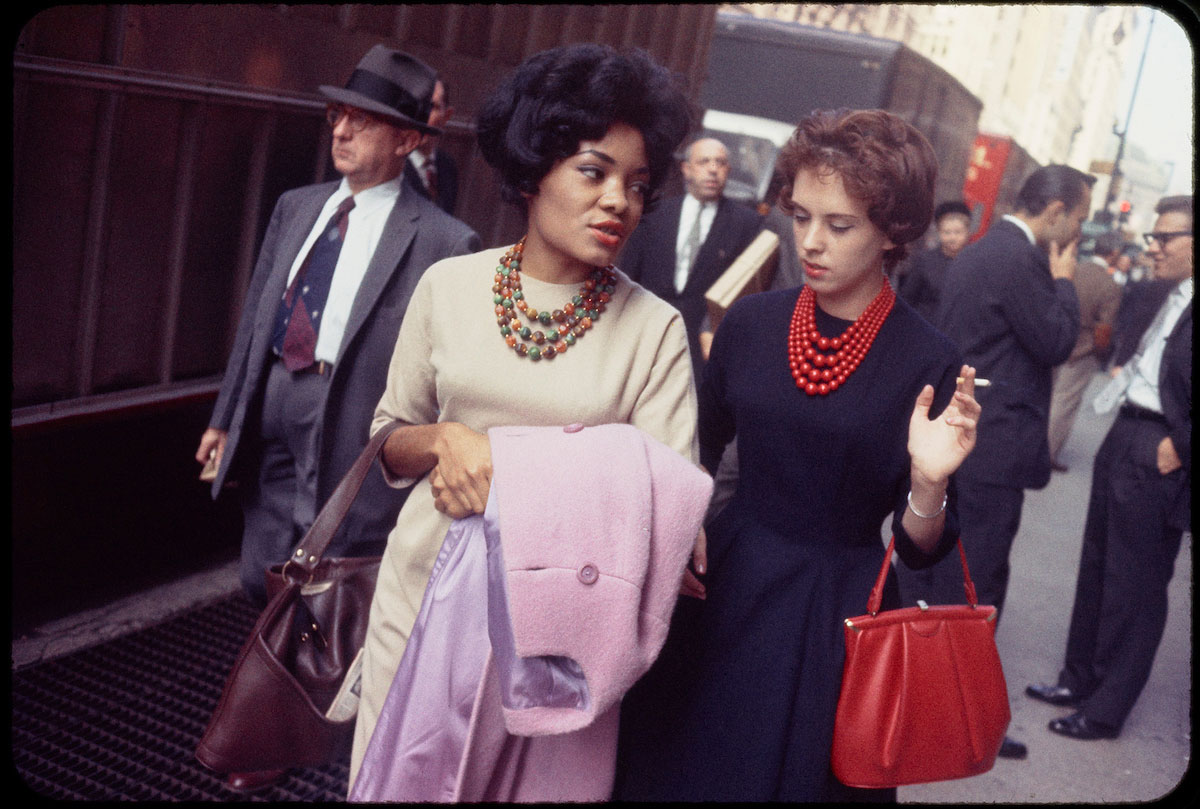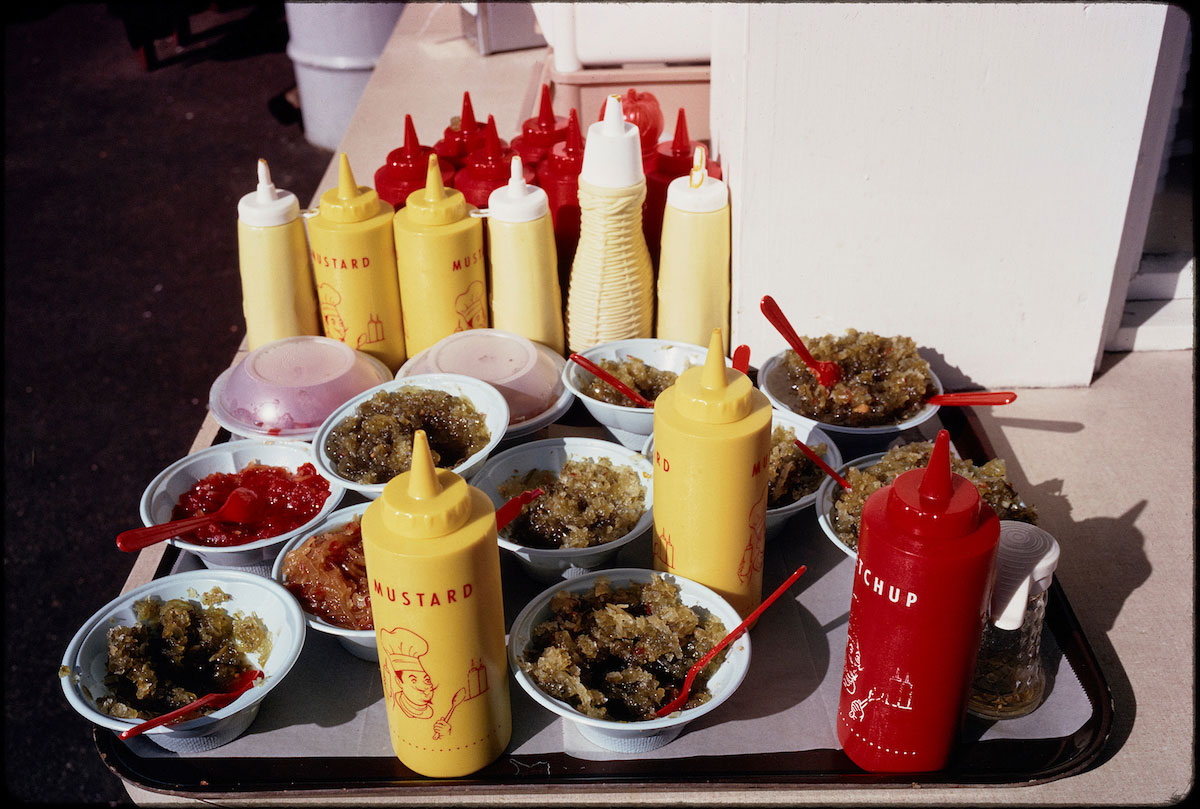PHOTO:Garry Winogrand-Color
 Garry Winogrand was born in New York, where he lived and worked during much of his life. He certainly didn’t invent street photography, but he transformed it from an art of observation to an art of participation. Winogrand photographed the visual cacophony of city streets, people, rodeos, airports and animals in zoos. These subjects are among his most exalted and influential work.
Garry Winogrand was born in New York, where he lived and worked during much of his life. He certainly didn’t invent street photography, but he transformed it from an art of observation to an art of participation. Winogrand photographed the visual cacophony of city streets, people, rodeos, airports and animals in zoos. These subjects are among his most exalted and influential work.
By Dimitris Lempesis
Photo: Brooklyn Museum Archive
“Garry Winogrand: Color” is the first-ever exhibition dedicated to the nearly forgotten color photographs of Garry Winogrand. The presentation will feature an installation of slide shows comprising more than 400 rarely or never-before-seen photographs that demonstrate the artist’s commitment to and experiments with color. Though primarily known for his black-and-white images that pioneered a “snapshot aesthetic” in contemporary art, Winogrand also produced more than 45,000 color slides between the early 1950s and late 1960s. The exhibition presents an enveloping installation of large-scale projections comprising more than 400 rarely or never-before seen color photographs that capture the social and physical landscape of New York City and the United States. On his numerous journeys through Midtown Manhattan and across the country, Winogrand explored the raw visual poetics of public life, on streets and highways, in suburbs, at motels, theaters, fairgrounds, and amusement parks. For him, the industrially manufactured color film, which was used by commercial and amateur photographers, perfectly reproduced the industrially manufactured colors of consumer goods in postwar America. Garry Winogrand’s unusual camera angles, uncanny sense of timing, and ability to capture bizarre and sometimes implausible configurations of people, places, and things made him one of the most influential photographers of his generation. He was extremely prolific, and though he died young, Winogrand created a vast corpus of work that documented society across the United States over the course of three decades. Garry Winogrand was born on 14/1/1928 in New York. Supported by the G.I. Bill after spending two years in the army, Winogrand attended City College of New York and then Columbia University, where he studied painting . He was introduced to photography by the school newspaper’s photographer, George Zimbel, who showed him the 24-hour darkroom. They formed the “Midnight to Dawn” club, its name reflecting their all-night work in the darkroom. Winogrand (along with Zimbel) also studied photography with Alexey Brodovitch in 1949 on a scholarship at the New School for Social Research. Brodovitch encouraged his students to rely on instinct rather than science and methodical technique when photographing, advice that had a significant impact on Winogrand’s approach to his craft. Along with other photographers of his generation, such as Lee Friedlander, Joel Meyerowitz, and Diane Arbus, Winogrand worked tirelessly to capture the theatre of the street. Early in his career Winogrand worked as a photojournalist for Pix, Inc., a photo bureau that provided images to news and feature magazines. Starting in 1954, under the mentorship of agent Henrietta Brackman, Winogrand sold commercial photographs to magazines such as Sports Illustrated, Collier’s, Redbook, Life, and Look, popular publications then in their heyday. In 1955 Winogrand’s work was included in the seminal exhibition “The Family of Man”, curated by Edward Steichen at MoMA. By the end of the 1950s, with television increasingly displacing magazines and photojournalists, Winogrand turned to making more-personal work. Winogrand’s aesthetic vision began to emerge in 1960, when he took to the streets of New York City with his Leica camera and his bravado and began using a wide-angle lens to create lyrical photographs of the human condition. Taking cues from documentary photographers Walker Evans and Robert Frank, Winogrand taught himself how to tilt the camera with the wide-angle lens in such a way that allowed him to include elements that, given his close vantage point, would have otherwise been cut off by the frame. This practice also resulted in unusual compositions with a certain amount of distortion. Shooting many frames in quick succession, Winogrand did not strive for the classical composition of traditional photography. The tilted-frame technique, as opposed to placing the horizon line parallel to the frame, was Winogrand’s successful experiment and subsequently became common practice among street photographers. His style quickly acquired the name “snapshot aesthetic” a term Winogrand rejected because it implied that his approach was casual and without focus. His photographs of people, primarily women, in public places and on the street (especially Fifth Avenue in New York City) were tinged with humour and satire. That work culminated in the 1975 book “Women Are Beautiful”, which seemed misogynistic to many readers. Winogrand was included with Ken Heyman, George Krause, Jerome Liebling, and Minor White in the 1963 MoMA exhibition “Five Unrelated Photographers”. He showed his photographs in a 1967 group exhibition at MoMA titled “New Documents”, the show included Arbus and Friedlander, photographers with whom he has been associated ever since. That, and all but one of his other exhibitions at MoMA, was curated by John Szarkowski, director of the MoMA’s photography department and Winogrand’s greatest champion. In addition to people, Winogrand photographed animals in Central Park Zoo and Coney Island’s New York Aquarium. He published some of those images in the book “The Animals” (1969 and exhibited them at MoMA in 1970. In 1971 Winogrand began teaching, first at the Illinois Institute of Technology’s Institute of Design (through 1972) and then at the University of Texas at Austin (1973–78), before moving to Los Angeles. Capturing such Los Angeles sites as Hollywood Boulevard, Venice Beach, the Los Angeles International Airport, and the Ivar Theater, a strip club, began to command his attention. From this period until his death, he photographed obsessively and did not edit even a fraction of the thousands of rolls of film that he shot. Winogrand produced a few discrete series in the 1970s, one of which was “Public Relations”. For that series, which Winogrand started shooting in 1969, he photographed high-profile events such as protests, press conferences, sports games, campaign rallies, and museum openings in order to capture what he called “the effect of the media on events”. The series became a book and an exhibition at MoMA guest-curated by fellow photographer and friend Tod Papageorge in 1977. Winogrand’s other big project of the 1970s was the cleverly titled “Stock Photographs”, documenting the Fort Worth Fat Stock Show, an annual livestock exposition and rodeo, which became Winogrand’s final photo book, published in 1980. Winogrand died suddenly at age 56, six weeks after he was diagnosed with cancer. He left a body of work that was in complete disarray, with about 35,000 prints, 6,600 rolls of film (2,500 rolls of exposed but undeveloped film and 4,100 processed but not reviewed), 45,000 colour transparencies, and about 22,000 contact sheets (nearly 800,000 images).
Info: Curator: Drew Sawyer, Brooklyn Museum, 200 Eastern Parkway, Brooklyn, New York, Duration: 3/5-18/8/19, Days & Hours: Wed & Fri-Sun 11:00-18:00, Thu 11:00-20:00, www.brooklynmuseum.org










